Welcome back! For those who missed it, here's a link to Part 1 - Mendenhall Glacier. Today we're headed down Tracy Arm toward a glacier we'll never reach, but that's okay--as any number of poets will attest, it's the journey that counts. Tracy Arm is a fjord near Juneau, a body of water we sailed where once there was only glacial ice. There's no way to decide whether Mendenhall Glacier or Tracy Arm was more amazing. There were too many icebergs for the captain to maneuver the ship around the last corner to Sawyer Glacier, and I have zero complaints because my mind was already thoroughly blown by the journey there.
You see, the cruise ship we were on was a rather large cruise ship. I don't have a lot to go on comparison-wise, having only been on the one, but man that boat was HUGE. Tracy Arm is... well, rather narrow. We were constantly threading a needle made of majestic, towering rock faces. I lament the inability of mere mortal cameras to capture that feeling properly. I felt dwarfed, insignificant, overawed. Beyond a certain point, I edged into sensory overload; the terrain was just too relentlessly magnificent to really parse. The human brain can only handle so much awesome.
Let's see, shall we?
I know the names of neither mountain nor hanging glacier, here; this was "just" part of the scenery on the way to Tracy Arm from Juneau. It just gets better from here. Better, and different!
Once into Tracy Arm we encountered endless icebergs, many of which floated right beneath our balcony. The waves you see there are wake, and the sound of water hitting iceberg was awesome, almost thundrous. I am exceedingly curious as to what created all those ridged divets in the ice. They're so patterned, regular.
Here's your first view of the walls of Tracy Arm. Blue sky; towering, massive slabs of granite; glacial water. It was all that gorgeous. The granite walls made me feel so very small. That looks distant; I cropped out a balcony railing that edged the frame.
Look at the lines in that great hunk of rock! It's so carved. Those are some tenacious trees, too. Along the left side, you can make out a waterfall ribboning down to the water.
Hey! Is this a hanging valley? It looks like what I've always imagined one to look like, but I crave confirmation. Those monolithic domes of granite just kept getting larger and closer as we ventured further into Tracy Arm.
I need more words for "huge" and "majestic" and "rock," because I'm running dry here. This is around the time when my brain just stopped trying to cope with all the awe-inspiring nature towering above us. Granite only impresses more when it's so weathered; it conveys the passage of eons so perfectly. Compared to that beautifully-carved rock wall, I was a tiny blip, beneath notice. So thrilling!
This wasn't the only dramatic, deep cut in the walls of the fjord, but it's the one I got a good picture of. I really wonder what sliced through the granite. Is that cut made by flowing water, the valley for a glacial stream? Another, not pictured here, was incredibly narrow and maintained the same width all the way up. It was as if someone used a knife of ridiculous proportions on the granite, just like slicing a loaf of bread.
Here's some action for us! Doesn't that look like a scar left by a massive rockslide? It's all rough and unweathered, with debris flowing down the rock face, and the edges are so clearly defined. I bet there was one hell of a wave when all that granite hit the water.
What are these?! How did those lines happen? Is that all granite, or are those thin layers of some other rock zigzagging through?
I see at least three distinct shades in there: the pale, brownish rock; the dark thin lines; and the not-quite-so-dark stuff along the lefthand side that the lines also crisscross through. This is why I want to be a geologist. I look at something like that and I desperately long to know how it all got that way.
To me, the endless questions of "Why?" and "How?" lie at the heart of all science. Geology in particular compels me because it shapes and underscores and propels everything on the Earth. It's not difficult to imagine how the idea of the classical elements came about: wind, rock, water and fire sculpting the land, both dramatically and invisibly, over immense periods of time.
The ship's announced destination that day was Sawyer Glacier, but the journey there impressed so much more. Our next trip winds inland up the Yukon Highway, through rocky terrain and over a seismic bridge. See ya there!
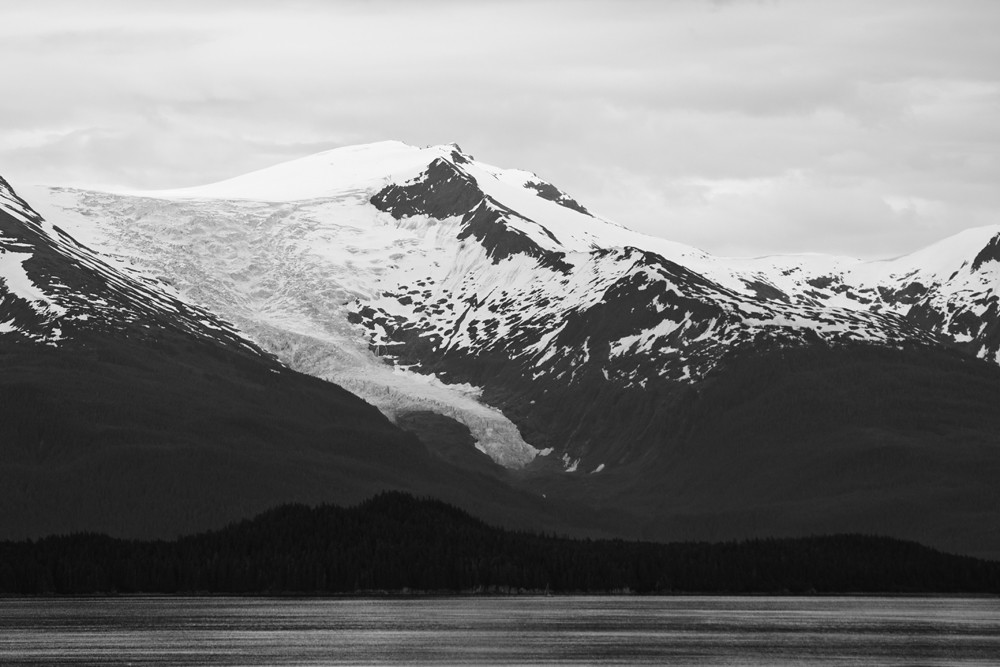

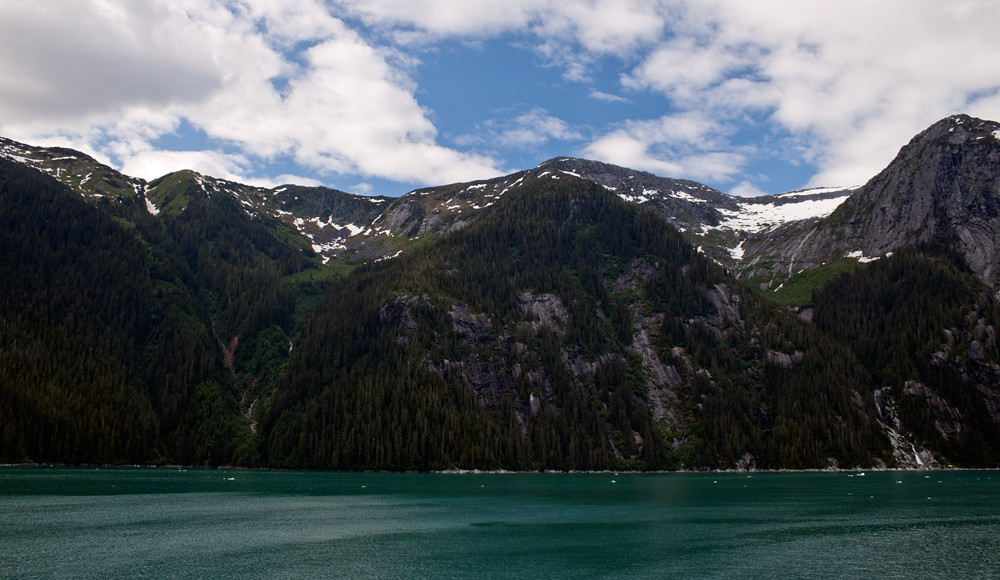
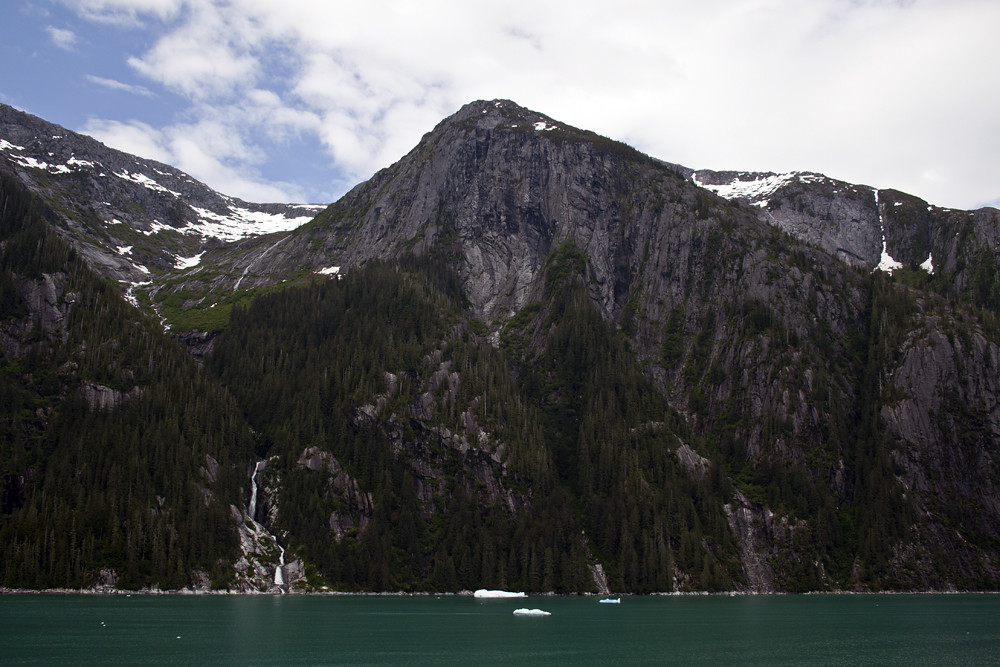
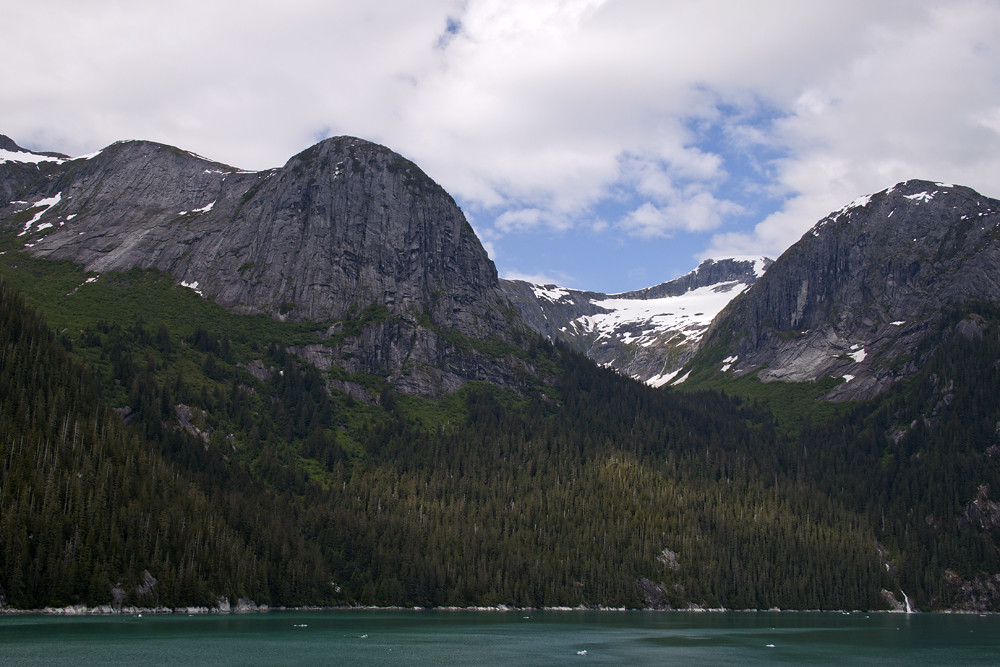
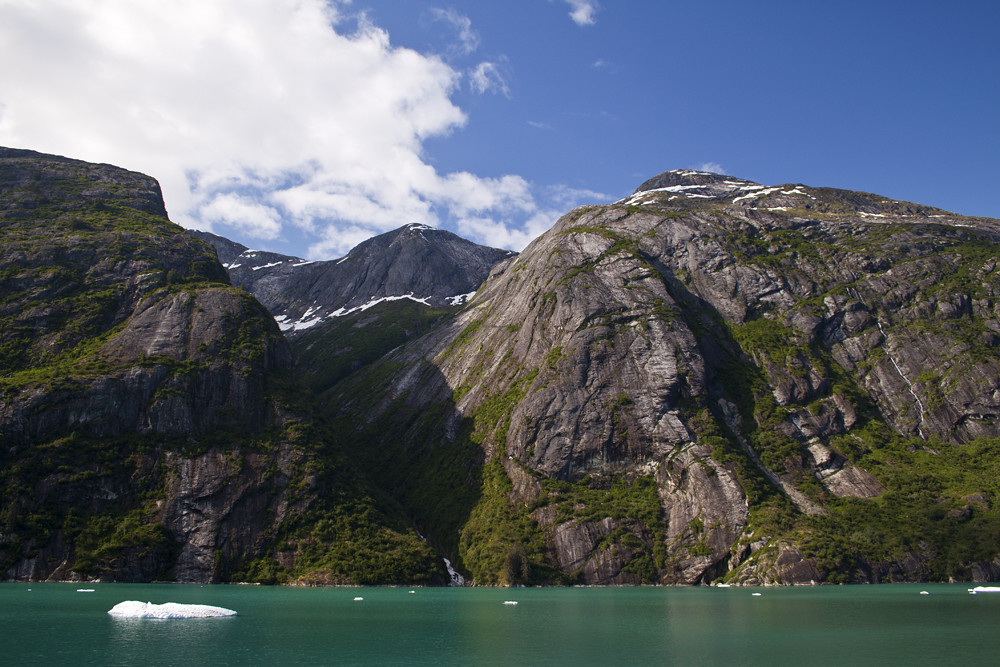
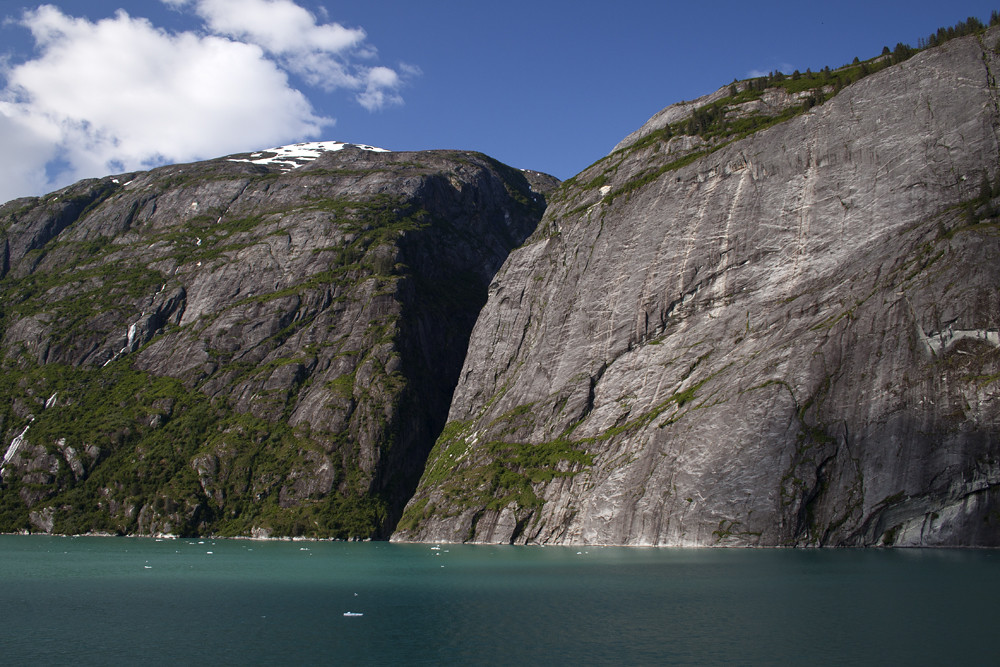
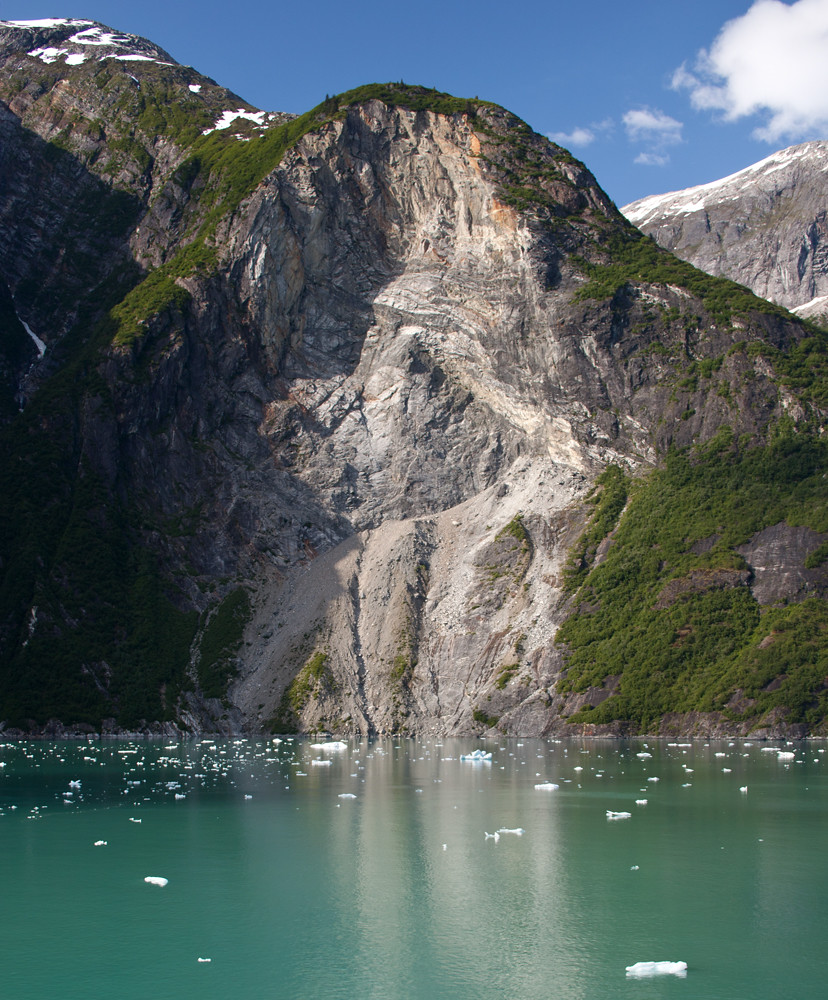








2 comments:
add me to the mind blown camp
and i wanna know the answers to the questions -- wonderful part 2 and i can hardly wait for your next post
Thanks so much for enjoying! I'm completely thrilled to be able to share this stuff. Also, whoops on the very last part; it's the Klondike Highway to the Yukon, not the Yukon Highway.
Post a Comment